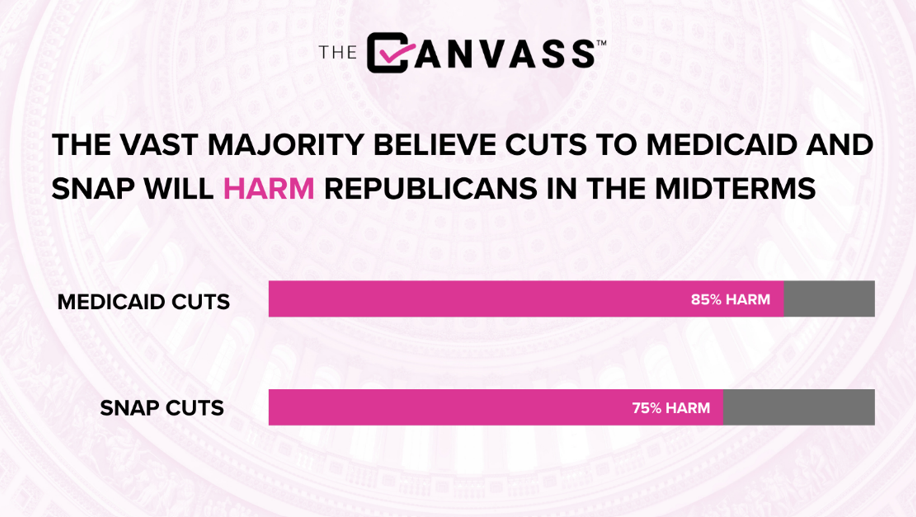Thought of the Week:
Questions come in all shapes and forms. Close-ended questions can be answered yes-no or true-false; open-ended questions call for the provision of multiple details; and leading questions guide the listener to provide a specific answer. Beyond these there are rhetorical questions, process questions, and probing questions. Some questions are completely unanswerable, like if you take an object back in time and leave it there, where did it originally come from; or if we’re all unique, doesn’t that make being unique not unique? And then there are divergent questions that have no right or wrong answers but rather encourage open discussion. Although similar to open-ended questions, divergent questions differ in that they invite the listener to share an opinion, especially one that relates to future possibilities. Recently, I was posed with one such divergent question that seemingly had no single correct answer but two diametrically opposed answers, each just as valid as the other. The question: will the federal government shut down at the end of September? Before you say, Jamie, you’re getting way ahead of yourself, Congress just passed the OBBB and we haven’t even hit the August recess yet, consider that the FY2026 government funding deadline is just 83 days away; talk of shutdown is already a hot topic of discussion at think tanks and among Congressional staffers; and the House has just 22 more session days before the close of the fiscal year. Answer 1: the government is definitely shutting down. Why? Here’s the backdrop: the White House’s “skinny budget” calls for $163 billion in cuts to non-defense discretionary spending while adding defense and border money. This comes on top of a rescissions package, which will poison chances of a bipartisan spending deal, OMB Director Vought is threatening additional “pocket rescissions,” while Speaker Johnson talks about more reconciliation bills to come. While Democrats on the House Appropriations Committee hate shutdowns, they’re very frustrated with all the above. What’s more, within the Democratic base New York City Democrats just picked a socialist as their mayoral candidate; representatives and senators are personally confronting Trump administration officials over immigration raids and getting arrested; and there was even a Trump impeachment vote in the House. The truth is Democrats want more, not less, challenges to the White House’s growing power. So, there is nothing in this toxic political climate that makes it likely that Democrats will work with Republicans to keep the government funded. Even if Speaker Johnson could get a funding bill, most likely a CR, through the House, Senate Majority Leader Thune (R-SD) would still need at least seven Democrats to get it through the Senate. Answer 2: Congress will avoid a shutdown. If Congress is good at anything, it’s taking things to the brink, then folding. Truth be told, a shutdown would hurt Democrats more than it would Republicans. President Trump and Director Vought could make all federal workers come into work and just not pay them. And it shouldn’t be forgotten that the longest (partial) shut down in history occurred during President Trump’s first term; he’s not averse to them. Democrats are also the anti-shutdown party. They’ve railed against them for years, arguing they are counterproductive, waste money, and no one wins. If Republicans are OK with a clean CR, it would put Democrats in a bind. Democrats would have to vote against a CR, at their funding levels, and for a shutdown. So, what do you do when there’s no clear answer? You make an educated guess. The truth is that no one knows whether Congress will avert a shutdown come Sept. 30. But when you consider that there’s no chance the House and Senate pass all 12 appropriations bills between now and the end of September, that Senate Minority Leader Schumer (D-NY) caught hell from his Democratic base when he helped Republicans pass a long-term continuing resolution (CR) back in March, and that GOP leaders will need the help of Democrats to avert a shutdown, even the passage of a CR before 9/30 seems less than probable. Our view is that the government may shut down on September 30 (60% odds), but within weeks, agree to a CR that lasts until year-end.
Thought Leadership from our Consultants, Think Tanks, and Trade Associations
Center for Strategic and International Studies (CSIS) Says Other Countries’ Trade Liberalizing Efforts Contradict U.S. Policy. The Trump administration has been aggressive in taking actions to “rebalance” the global trading system, and in the process has conveyed the message that the U.S. is no longer a reliable trading partner. In addition, the way White House policies have been rolled out has maximized uncertainty and left investors and manufacturers confused about how they should proceed. The obvious corollary for other governments is that it might be time to diversify and find new economic partners, which appears to be happening—with the U.S. on the sidelines. The fact that the two biggest national economies in the world are pursuing similar policies that lean heavily on protection in the name of national security doubtless gives other countries pause since so many of them have significant economic stakes in both China and the U.S. Considering new U.S. tariff uncertainty, the WTO now estimates a 1% contraction in global trade volumes, warning about possible cascading effects from trade diversion as companies reroute goods to countries with preferential access. No doubt, it is beginning to appear that third country strategies are emphasizing diversification into new markets while not entirely abandoning their larger partners. This is the time-honored “don’t put all your eggs in one basket” approach that has been good advice for centuries. It is not, however, good news for the U.S., particularly exporters, who will find themselves foreclosed from the market access advantages of other country agreements that leave American businesses on the outside looking in. Ironically, the U.S.’s insistence on preferential agreements rather than those based on the most-favored-nation principle, will end up harming U.S. exporters as other agreements adopt the same approach and extend their benefits only to participating countries.
Conference Board Sees June’s Goldilocks Payroll Data Allowing the Fed to Possibly Cut Rates in H2. June’s jobs report points to further normalization of wage inflation in the economy, which still enjoys low unemployment. If the trend continues over the summer, then the Fed will be able to resume normalizing interest rates in the second half. This would be because of a better-than-expected inflation outlook, and not necessarily a worsening labor market. In fact, the labor market remains on solid footing despite the negative impacts of tariffs and uncertain economic growth. Payrolls rose by 147,000 in June, while the unemployment rate declined to 4.1%, signaling continued resilience in labor demand. Layoffs remain low, even as new hire demand continues to be lukewarm amid slowing growth. The removal of uncertainty surrounding the fiscal policy outlook and tariffs may allow equilibrium to last into H2. Difficulties finding a job for those unemployed, reflected in rising levels of continuing jobless claims, remains a downside risk, although headline payroll readings indicated the labor market remains solid, even as underlying growth slightly moderates from prior years. Job gains were concentrated in a relatively narrow range of industries, including a large, unexpected increase in government employment, which made up half of the monthly payroll gain. Household data showed a modest rebound in employment in June, but ongoing drops in the labor force continued to weigh on the unemployment rate. Looking ahead, population ageing should continue to exert downward pressure on the jobless rate.
Eurasia Group Says Tax Bill’s Impacts are Big, but Not Always Beautiful. The One Big Beautiful Bill Act (OBBBA) extends the 2017 Trump tax cuts, expands business and personal tax credits, and increases funding for border security and defense—but fails to fully offset these costs, worsening the U.S. fiscal deficit outlook. The OBBBA will likely be a boon for the defense and immigration enforcement sectors. At the same time, early sunsetting of several energy tax credits—while not positive—is unlikely to be catastrophic for the renewables sector, and will likely precipitate a near-term surge in investment as the eligibility window wanes. Politically sensitive spending cuts, most notably to Medicaid programs, are mostly delayed until after the 2026 midterm elections with the White House gambling that the positive economic impacts of the OBBBA’s frontloaded tax cuts will materialize before midterms and solidify voters’ goodwill. Analysts remain skeptical that the OBBBA will stimulate meaningful economic growth.
“Inside Baseball”
President Trump is Ready to Hike Tariffs for Laggards After August Deadline. The White House’s new August 1 deadline for trade negotiations is more real than previous trade deadlines and reflects escalatory trade risks for 15%-20% of total U.S. trade volumes. Small trade partners that are lagging in their negotiations with Washington are at risk, as are larger economies such as Japan and South Korea, which face new threats of 25% tariffs from Washington; Tokyo’s brief window between upper house elections on July 20 and the deadline on August 1 may be its only chance to avoid new tariffs. Nations left without a preliminary deal after August 1 should prepare for effective tariff rates higher than the current 10%; however, Canada, Mexico, and China are on separate paths, with active negotiations that will likely forestall unilateral tariff increases this year.
In Other Words
“Gavin Newsom in South Carolina today is like a kale salad at a Waffle House—confused, unwelcome, and about to get sent back,” Rep. Fry (R-SC).
“Many Democrat elected officials are trying to turn this into a political game, and it is not. This is a national tragedy, and the administration is treating it as such. We know the National Weather Service provided early and consistent warnings; they gave out timely flash flood alerts,” White House Press Secretary Leavitt on Democrat allegations that staffing cuts were partially to blame for the Texas flood’s high death toll.
“Oh my God, I just wanna go home. I’ve already…I’ve missed our entire trip to the beach,” Sen. Fetterman (D-PA) on the Senate’s deliberative legislative process.
Did You Know
Alaska is the northernmost, westernmost, and easternmost state in the United States.
Graphs of the Week
According to Punchbowl News’ latest Canvass survey, a majority of Capitol Hill staffers say the reconciliation bill’s cuts to Medicaid and SNAP will hurt Republicans in the midterm elections. Although the law is a win for President Trump’s legislative agenda, the cuts could leave millions without health insurance or food assistance. The poll shows that 85%, including 73% of GOP staffers, say the cuts to Medicaid could cost the GOP victories in the next midterm elections. On SNAP, 75% said the funding cuts would harm Republicans next year. Republicans have a razor-thin House majority, a newly challenging Senate map, and historically, the president’s party doesn’t do well in midterm elections.

